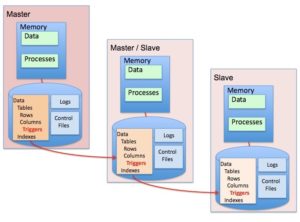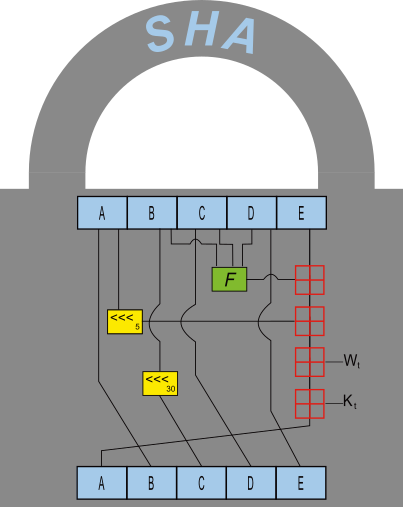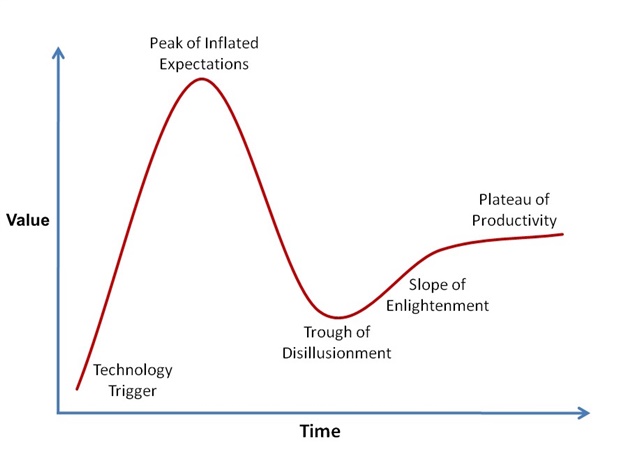Announcing the General Availability of SQL Diagnostic Manager for MySQL 8.9.7

Categories
- Free tools
- SQL Compliance Manager
- SQL Defrag Manager
- SQL Diagnostic Manager for MySQL
- SQL Diagnostic Manager for SQL Server
- SQL Diagnostic Manager Pro
- SQL Inventory Manager
- SQL Query Tuner for SQL Server
- SQL Safe Backup
- SQL Secure
- SQL Workload Analysis for SQL Server
- Uptime Infrastructure Monitor Formerly Uptime

Monitoring Master-Slave Replication in MySQL 8
MySQL 8 introduced a number of enhancements to improve both replication performance and the monitoring thereof. Improvements included more efficient replication of small updates on big JSON documents, the addition of Performance Schema tables for slave performance...

Understanding Script Block Logging (Part 1)
Beginning with PowerShell 5, the PowerShell engine starts to log executed commands and scripts. By default, only commands considered potentially harmful are logged. When you enable verbose logging, though, all executed code from all users on a given machine are...

Reading Event Logs Smart (Part 1)
When you query an event log with PowerShell, by default you get back a text message with the logged information. For example, if you’d like to know who logged on to your machine, you could use code like this (Administrator privileges required): Get-EventLog -LogName...

Setting up Basic Master-Slave Replication in MySQL 8
Since April 19th, when MySQL 8.0 became Generally Available (GA), the MySQL community has been abuzz with excitement over all of the new features and improvements. Many of new features were improvements to performance or monitoring, while others were specifically...

Turning Display Off Immediately
If you are about to launch a lengthy automation script, why not turn off the display right away instead of waiting for the screen saver timeout to kick in? Turns off your Display Immediate Here is a simple function that turns off your display immediately. Just move...

Connecting to PostgreSQL and MySQL via ODBC to IDERA’s ER/Studio Data Architect
Howdy! Introduction: In this blog post, we will show you how easy it is to connect to MySQL and PostgreSQL via ODBC. As you are aware we can reverse engineer databases natively with SQL Server Oracle Hive Sybase ASE Azure SQLDB and MongoDB However, there...

SHA Hash with C++Builder and Delphi
Fascination with Cryptographic Hash Functions I've always been fascinated by encryption & compression, but my favorite is probably the cryptographic hash function. A hash function is a one-way algorithm that takes an input of any size and always produces the same...

Improve MariaDB Performance using Query Profiling
Query profiling is a useful technique for analyzing the overall performance of a database. Considering that a single mid-to-large sized application can execute numerous queries each and every second, query profiling is an important part of database tuning, both as a...

Data Vault Modeling with ER/Studio Data Architect
Overview I have been asked multiple times if ER/Studio supports Data Vault Modeling. The answer is yes, ER/Studio does support multiple approaches of data modeling including Data Vault. This article will introduce some key facts behind the Data Vault Architecture and...

Error Logging in MySQL 8
Although only available as a Release Candidate, MySQL 8 is already proving itself to be a huge leap forward in many regards. Error logging is no exception. The MySQL development team just announced that they have redesigned the error logging subsystem to use a new...

Purging Kerberos Tickets for All Accounts
In the previous tip we covered klist.exe and how it can be used to purge all Kerberos tickets for the current user so that new permissions will take effect immediately. Combining PowerShell with klist.exe for More Flexibility While PowerShell can run external apps...

Purging Kerberos Tickets for the Current User
No need to reboot a system just to apply new permission settings. Instead, purge your Kerberos tickets so that you will get a new ticket based on the current permissions. PowerShell Command to Purge Kerberos Tickets In PowerShell, use this command to purge all cached...

Using Chocolatey with PowerShell
Chocolatey is a free package manager for Windows that can be used to download and install software. Installing Chocolatey via PowerShell Before you can use Chocolatey from PowerShell, you need to download and install it. If you don’t have administrator privileges, use...

Virtual Machine Snapshots versus Database Backups
Virtual Machine Snapshots Virtual machines provide exciting possibilities concerning backup, recovery, and cloning of databases. Convenient mechanisms are available for obtaining consistent snapshots of data volumes in virtual machines. Correctly implemented and...

Positioning the PowerShell Console Cursor
Enabling VT Escape Sequences in PowerShell 5.1 Starting in PowerShell 5.1, the PowerShell console supports VT escape sequences that can be used to position and format console text. Note that this works in the console only, not the PowerShell ISE. Note also that you...

Database Audit Log Monitoring for Security and Compliance
We recently conducted a webinar on Audit Log analysis for MySQL & MariaDB Databases. This blog will further provide a deep dive into the security & compliance surrounding databases. Database auditing is the tracking of database resources utilization and...

Sort IPv4 and IPv6 Addresses Correctly
When you try and sort IPv4 addresses via Sort-Object, this fails: PS> '10.1.2.3', '2.3.4.5', '1.2.3.4' | Sort-Object 1.2.3.4 10.1.2.3 2.3.4.5 Alphanumeric Sorting by Default This is no surprise because the data is of type “string”, so Sort-Object uses alphanumeric...

The RDBMS is Dead
If you suspected the title of this blog is click-bait, then you would be correct. But bear with me anyway on a little retrospection of the relational database market, where it has been, and where I think it is going to end. What is an RDBMS? Anyone reading this...

Sort IPv4 Addresses Correctly
Reviewing the Test-OnlineFast Function In the previous tip we published a super-fast function called Test-OnlineFast, and this function was able to ping an entire IP segment in record time: PS> $iprange = 1..200 | ForEach-Object { "192.168.189.$_" } PS>...

Final Super-Fast Ping Command
Revisiting the Test-Online Fast Function In the previous tip series, we developed a new function called Test-OnlineFast that can ping multiple computers in record time. For some reason, the final version of this function did not include the pipeline support we...
